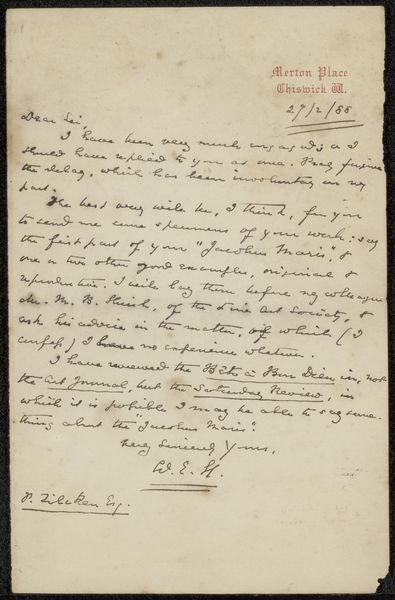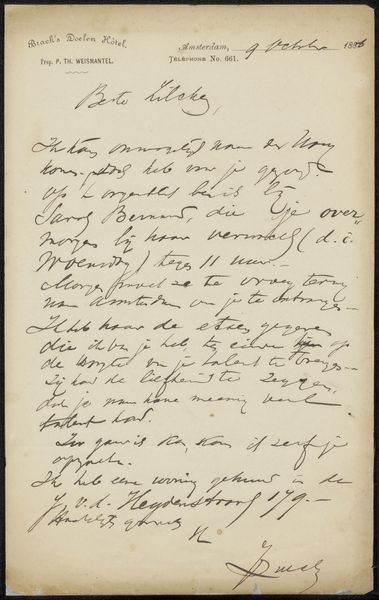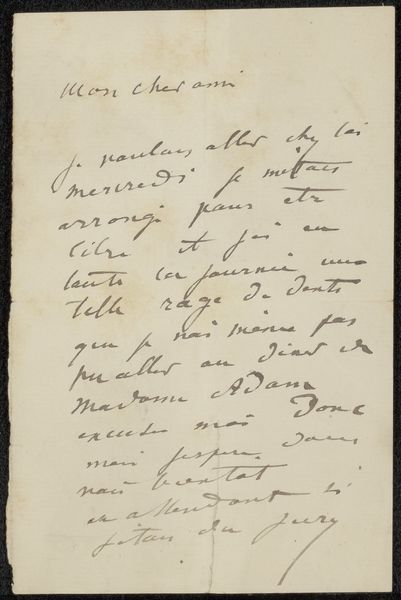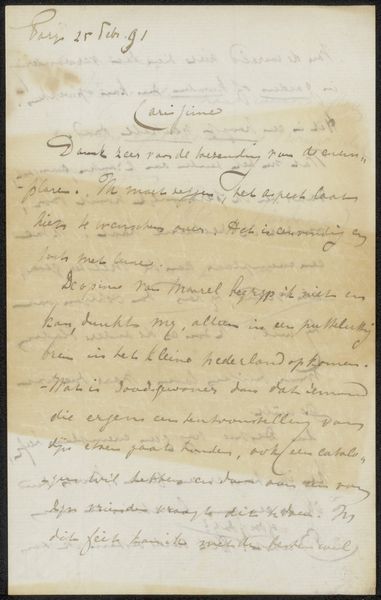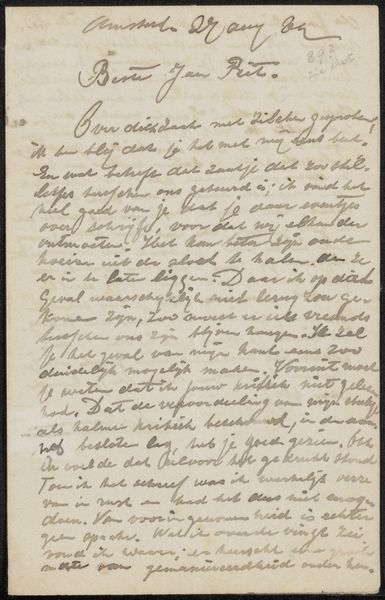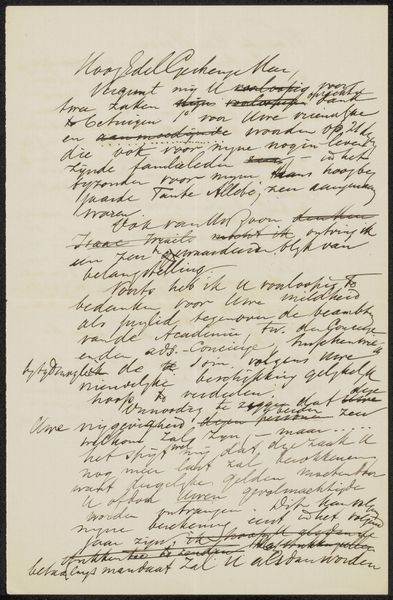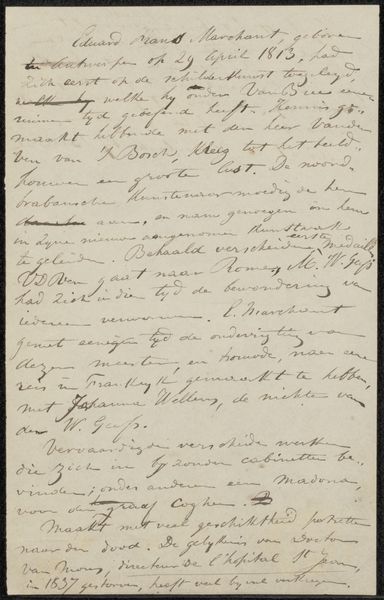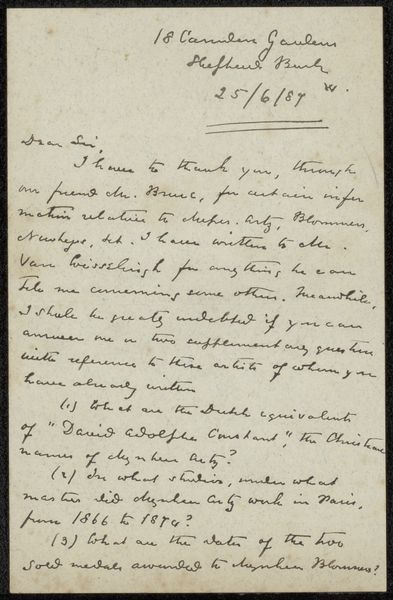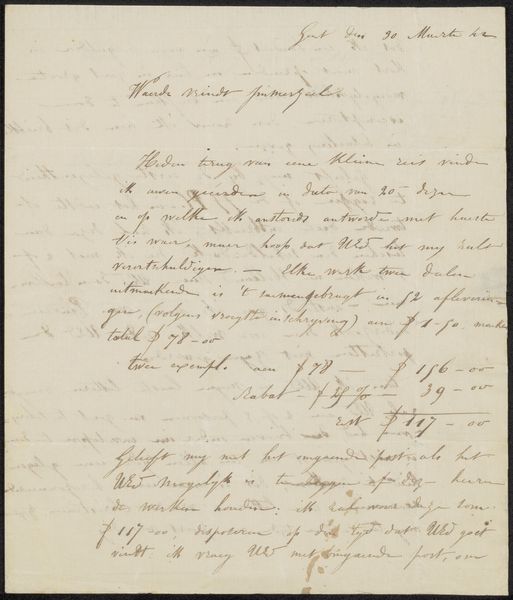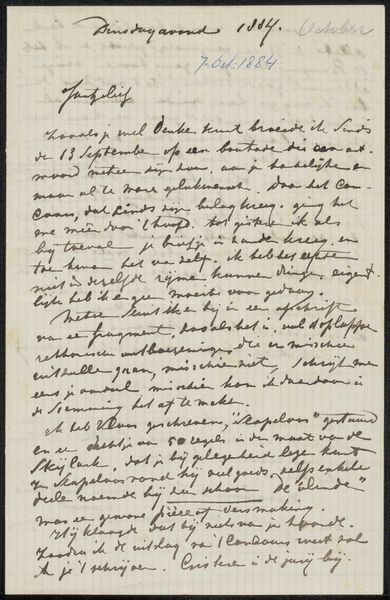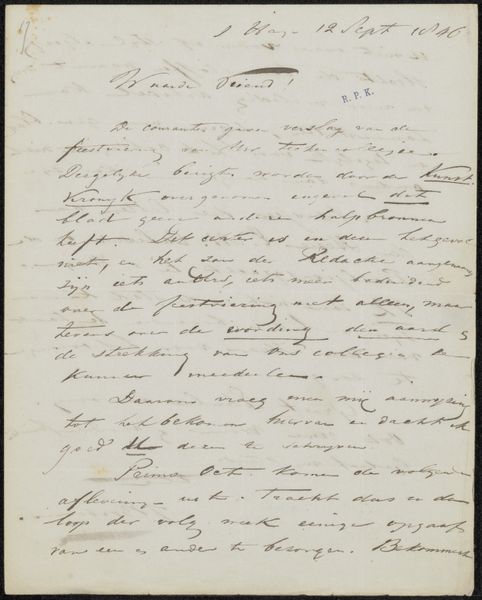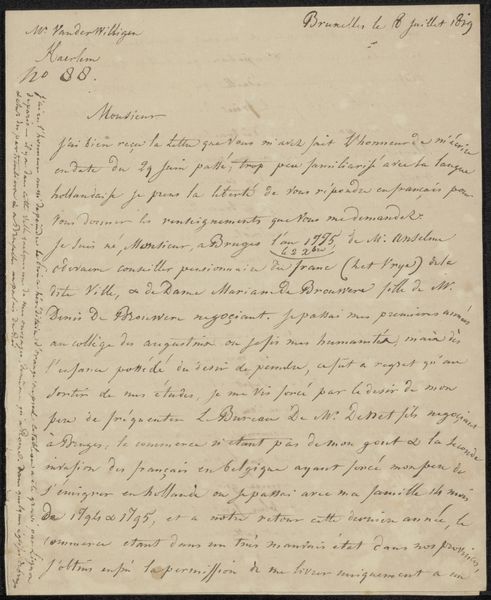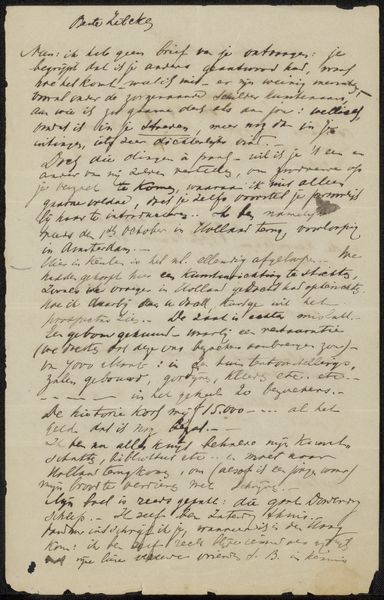
drawing, paper, ink, pen
#
portrait
#
drawing
#
paper
#
ink
#
pen
Copyright: Rijks Museum: Open Domain
Curator: Here we have “Brief aan Philip Zilcken,” attributed to Eduard Karsen, likely created between 1890 and 1898. It's an intriguing piece done in ink on paper. What strikes you immediately? Editor: It's the texture of the paper and the delicate linework of the ink. The varying pressure of the pen creates a rhythm across the surface that leads your eye down the page, but what is it about this document that caught your eye? Curator: For me, it's how the careful application of line articulates thought, transforming the mundane into a visual narrative of human connection. The handwritten script holds not just words but also feeling. What can you tell me about the context in which such a piece might have emerged? Editor: Letters such as these reveal personal networks and the circulation of ideas within artistic communities. This one is addressed to Philip Zilcken, another artist. This letter possibly dealt with accounting and finances that reveal the business side of the art world. It appears that such letters not only contained invoices but also personal details and social considerations. Curator: And how does the structure reinforce or perhaps even challenge this purpose of direct, almost utilitarian exchange? Editor: Its composition is decidedly unbalanced, with dense clusters of text juxtaposed with blank spaces. I feel there's a dialogue occurring, between public duty and private contemplation; this reflects the social circumstances of that time period, as private art dealings had ramifications on how they were viewed publicly and supported. Curator: It certainly brings a new level of complexity to something as simple as a written correspondence. It's amazing how a glimpse into the past offers reflections of the present, especially when mediated by the aesthetics of design and function. Editor: Absolutely. By paying attention to the aesthetic features alongside their historical importance, we can deepen our appreciation for objects, seeing not just the message, but the messenger and their moment in history.
Comments
No comments
Be the first to comment and join the conversation on the ultimate creative platform.
